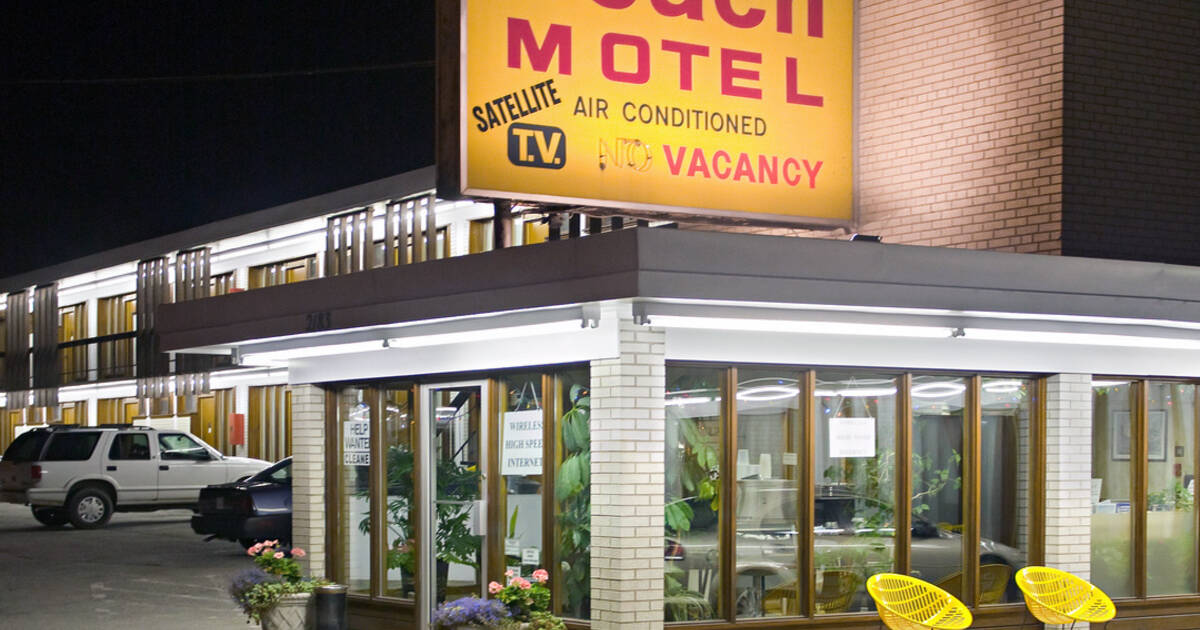
You wouldn't know it when driving around Toronto these days, but the city and its surrounding areas used to be well populated by motels. Two areas in particular were hotbeds for these humble accommodations: Kingston Rd. in Scarborough and Lakeshore Rd. in Etobicoke.
Along with these suburban motel strips, at various points in the past you might have encountered a collection of motels around the airport, immediately north of the city on Yonge St., and even at 415 Jarvis St., where the Four Seasons Motor Hotel gave birth to a global hotel chain.
Most people who've lived in the city for more than a decade have encountered the last remains of motel culture in Toronto, even if these remnants of the past don't occupy our attention much.
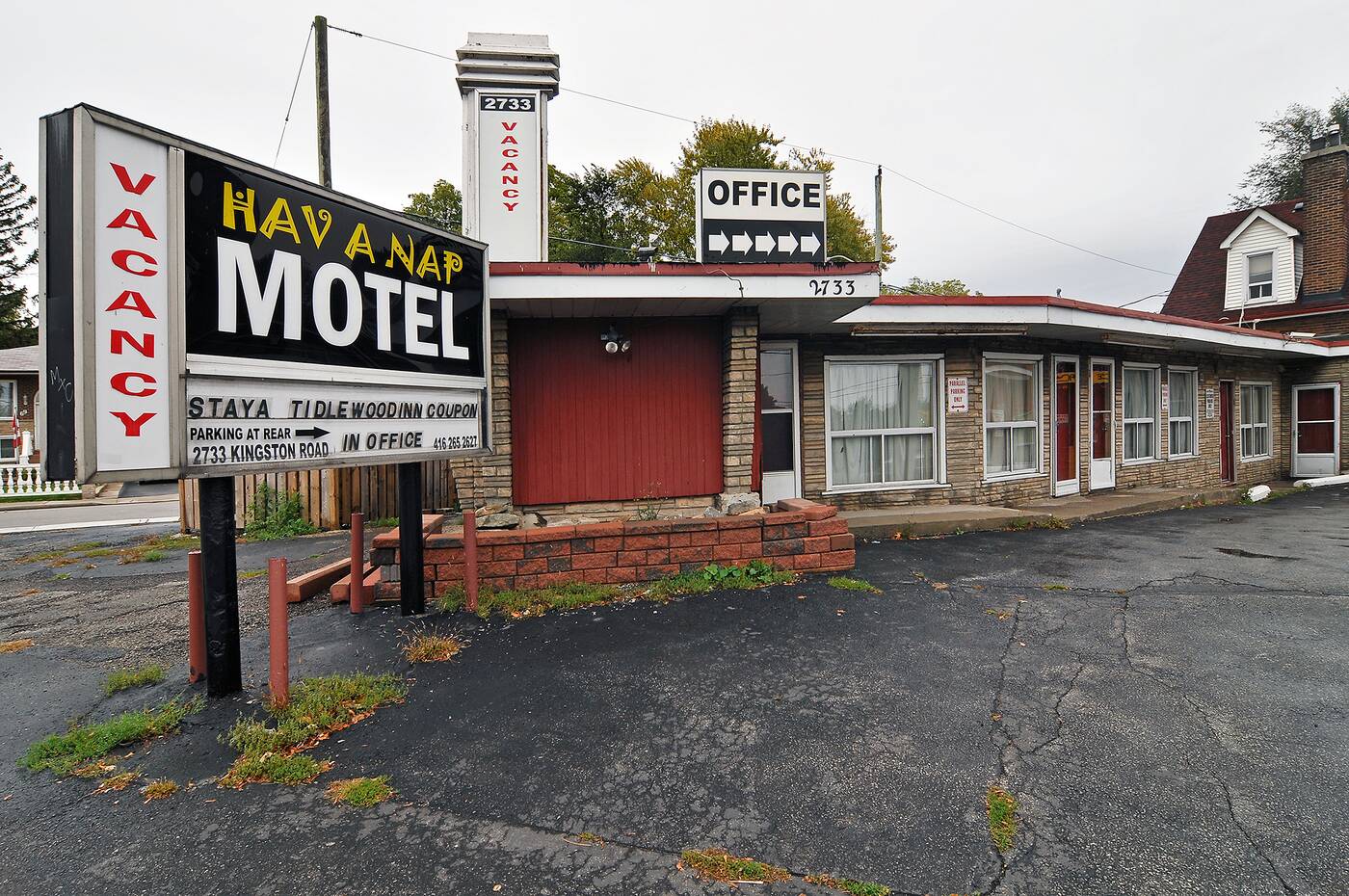
The Hav-a-Nap Motel remains — for now. Photo by Derek Flack.
You can still spot a few that remain spread along Kingston Rd. from Brimley Rd. through to West Hill, including the iconic Hav-A-Nap Motel, which announces what's left of the strip when approaching from the west.
The last of the Lake Shore motels were finally demolished in 2012 to make way for massive condo developments along the western waterfront, drawing a conclusion to a history with origins that stretch back to the late 1910s when the first tourist camps arose in Etobicoke.
Yes, the rise of the motel dates all the way back to popularization of the automobile.
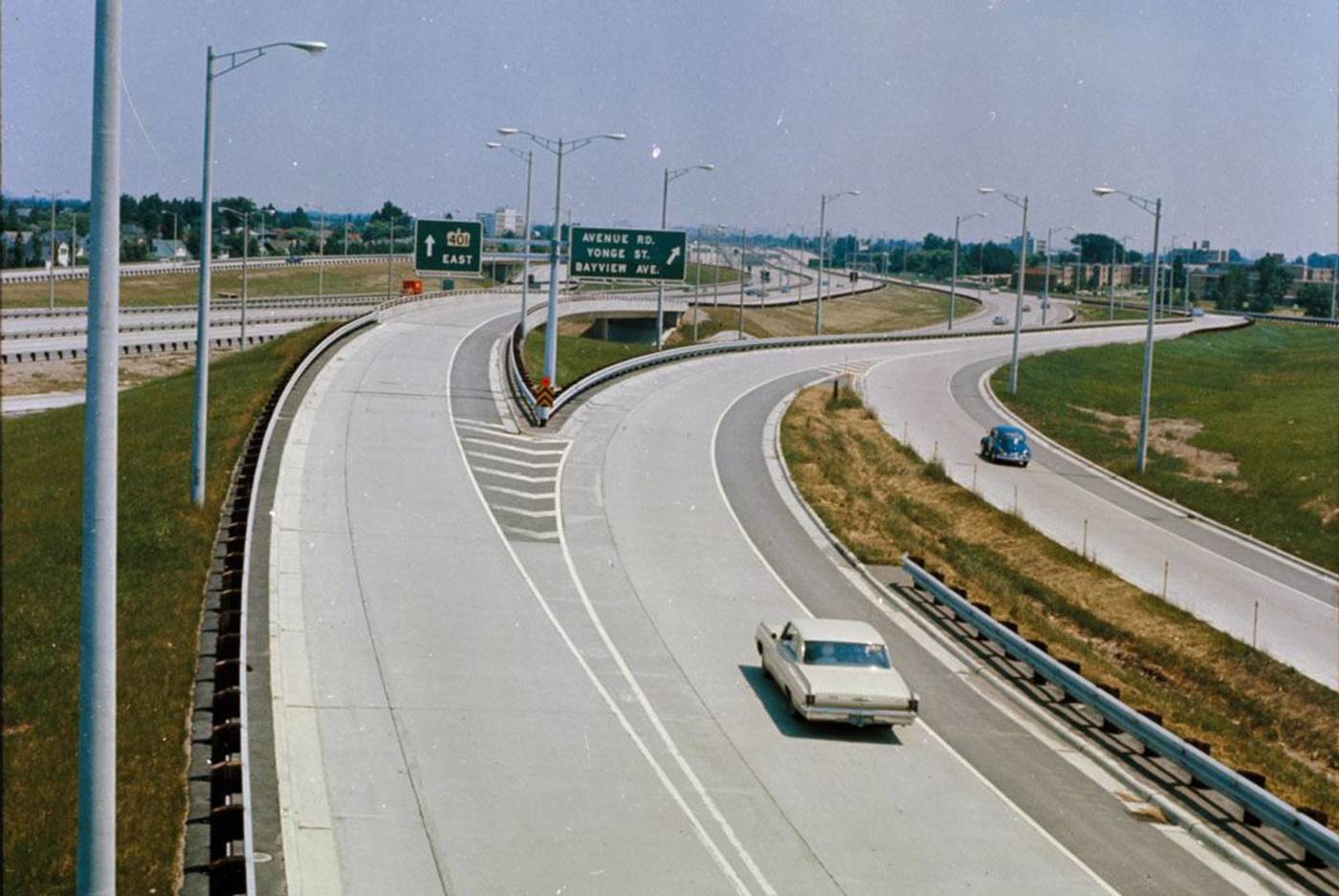
Yours to discover — the 401 in the early 1960s. Photo via the Toronto Archives.
The decline of the motor court in Toronto begins shortly after most of the photos and postcards below were printed. Havens for cheap accommodation and lakeside leisure in the '50s and '60s, with the rise of the 401 and the QEW, tourists were gradually led off of Highway 2.
The car gave birth to the motel, but the interstate and superhighway eventually killed it.
There are other reasons, of course, not the least of which was the rise of major corporate chains. Mom-and-pop businesses on secondary roads just couldn't compete. Outdoor swimming pools, once such a draw, lost much of their allure when they become common in suburban homes.
From the 1980s on, Toronto's motels became progressively more seedy. Those that remain are often rented by the month, and on occasion used by the city of Toronto as makeshift homeless shelters. The handful that still dot Scarborough probably won't last beyond another decade.

The architecture of anonymity along the Lakeshore motel strip in the 1960s. Photo via the Toronto Archives.
Even as these structures slowly fade from the landscape, evidence of their former existence can, however, be spotted everywhere. The non-architecture of suburban box stores, strip plazas, and gas stations all trace their origins to the humble motor court, where a blazing neon sign was always more important than an ostentatious building.
In a sprawling city like Toronto, where so much happens outside of the most dense areas, the motel continues to leave its mark on our urban geography — for better or worse.
Photos
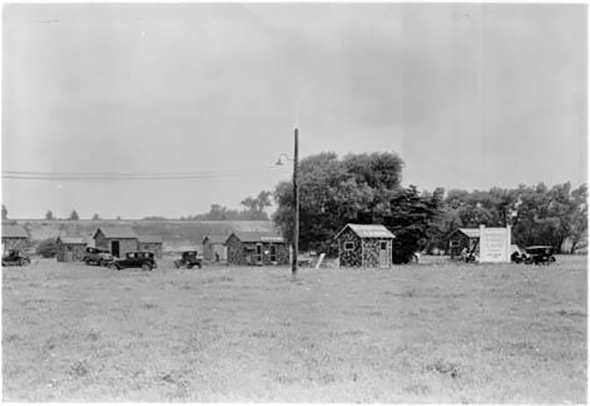
Etobicoke tourist camp ca. 1918.
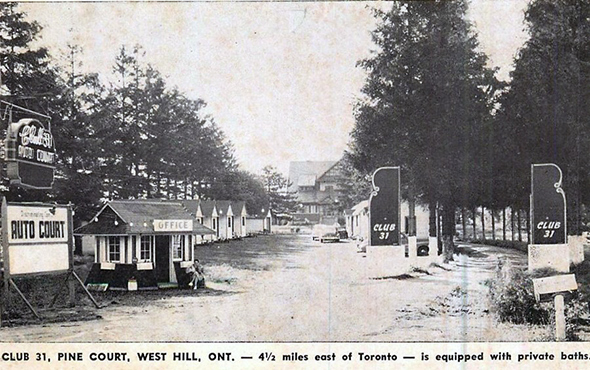
Pine Court, Auto Court in West Hill (Scarborough), 1948.
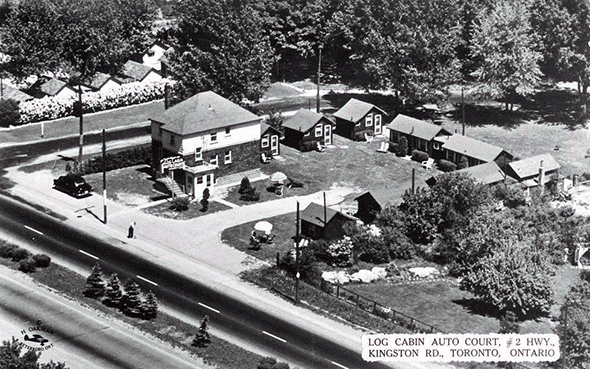
Log Cabin Auto Court in West Hill, 1950s.
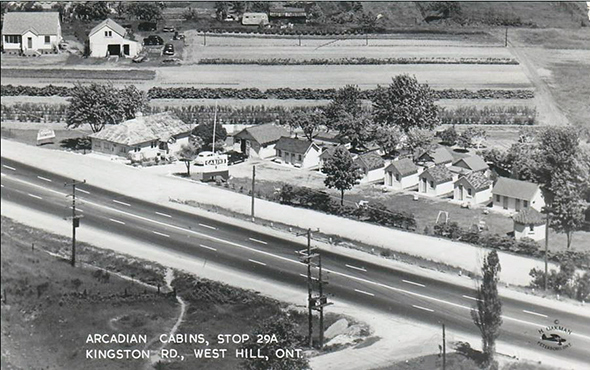
Arcadian Cabins on Kingston Rd., 1950s.
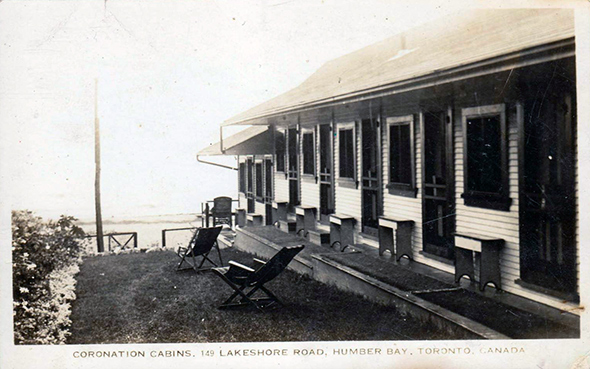
Coronation Cabins on Lakeshore Rd., 1950s.
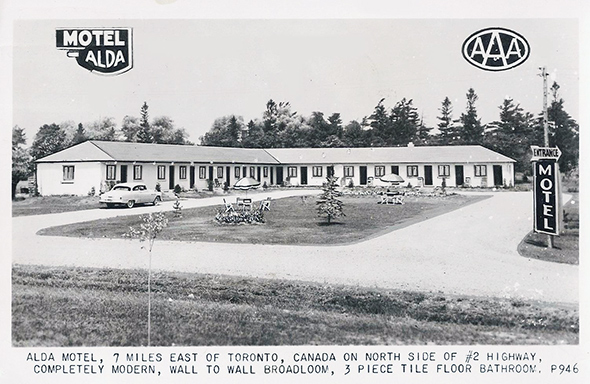
Motel Alda on Highway 2.
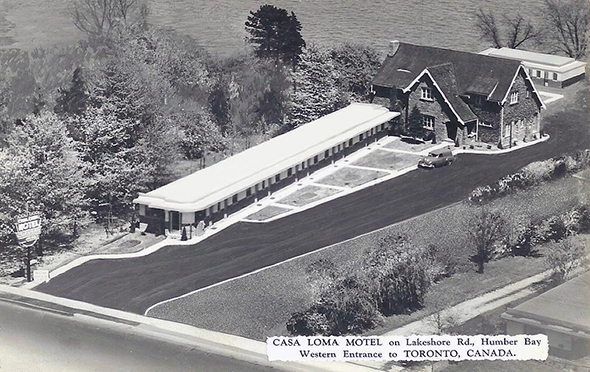
Casa Loma Motel on Lakeshore Rd.
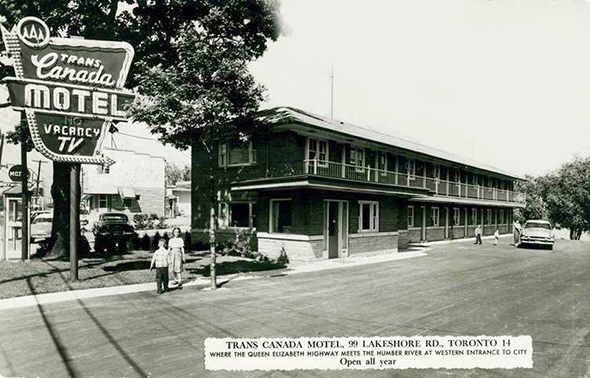
Trans Canada Motel on Lakeshore Rd., 1950s.
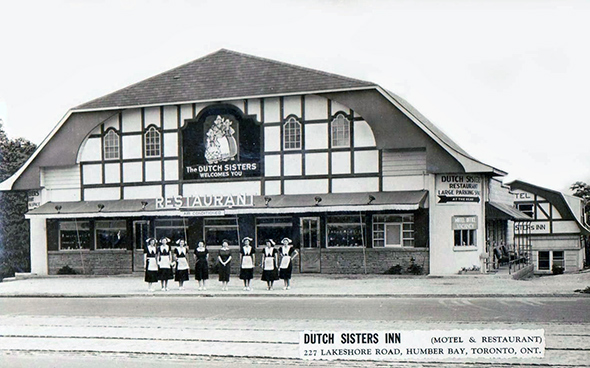
The Dutch Sisters Motel & Restaurant on Lakeshore Rd.
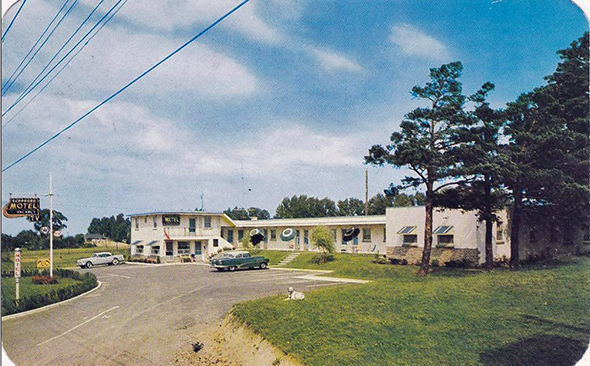
Scarboro Motel postcard ca. 1950s.
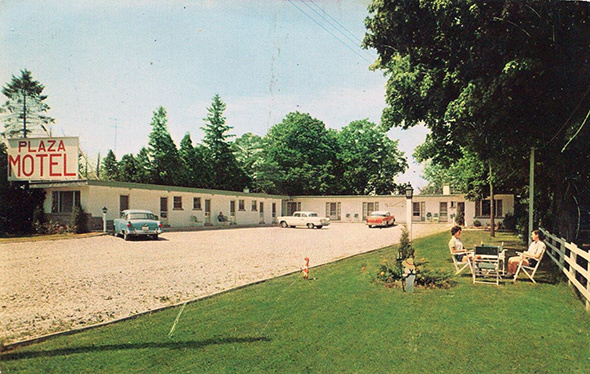
Plaza Motel, 4585 Kingston Rd.
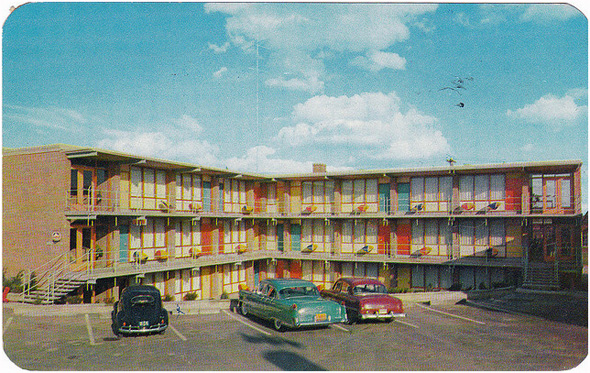
Andrews Motel on Kingston Rd. (demolished 2015).
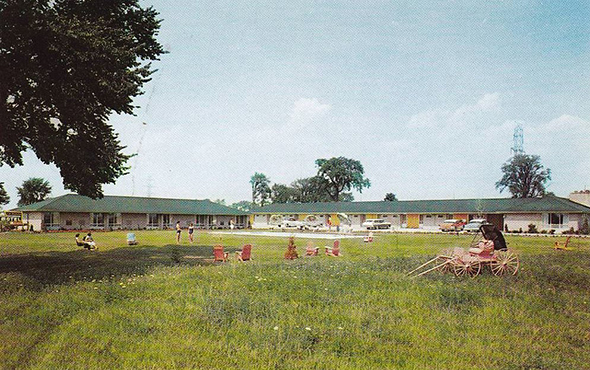
LA Plaza Motel on Highway 27.
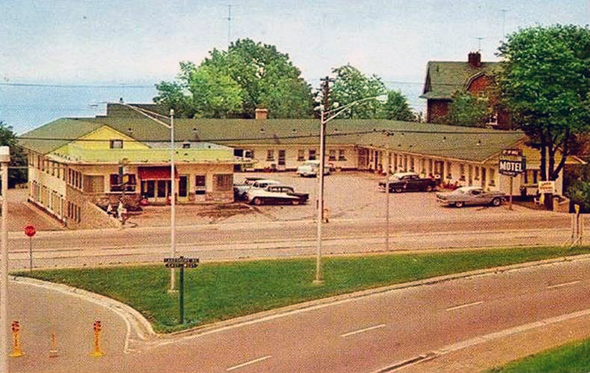
Chancellor Motel on Lakeshore Rd.
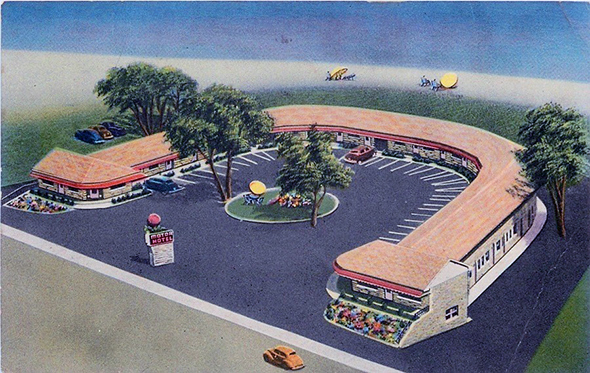
Universal Motel (near Sunnyside) postcard ca. 1950s.
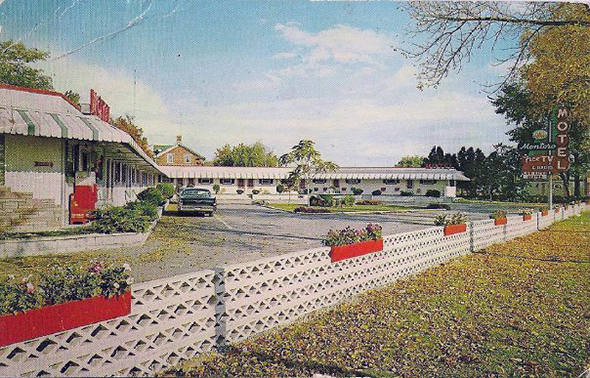
Montoro Motel on Kingston Rd., 1950s.
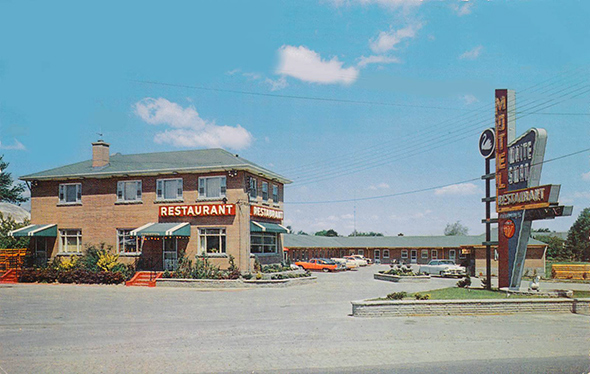
White Swan Motel on Lakeshore Rd., 1960s.
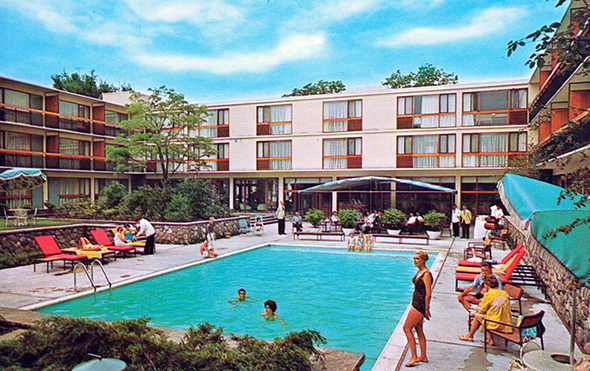
Four Seasons Motor Hotel on Jarvis St., 1961.
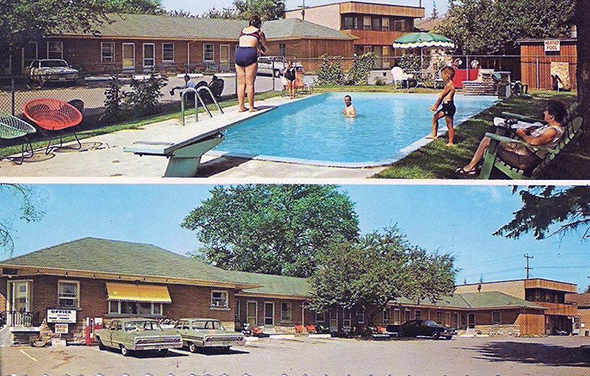
Merry Macs Motel, Kingston Rd. and Lawrence area.
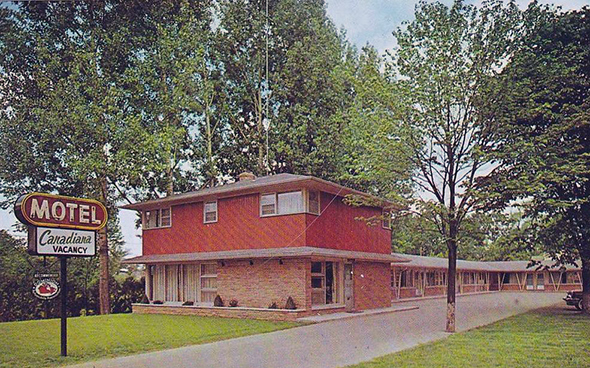
Canadianna Motel on Lakeshore Rd.
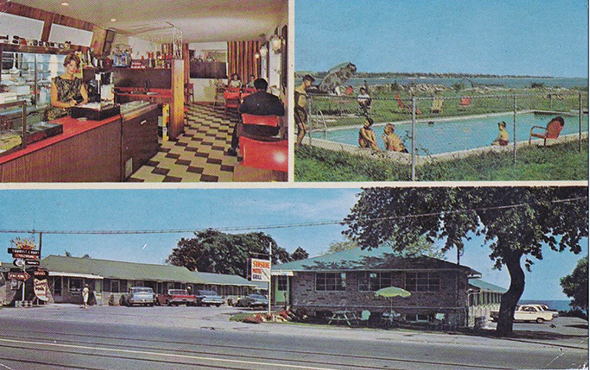
Sunshine Motor Court on Lakeshore Rd. mid 1960s.
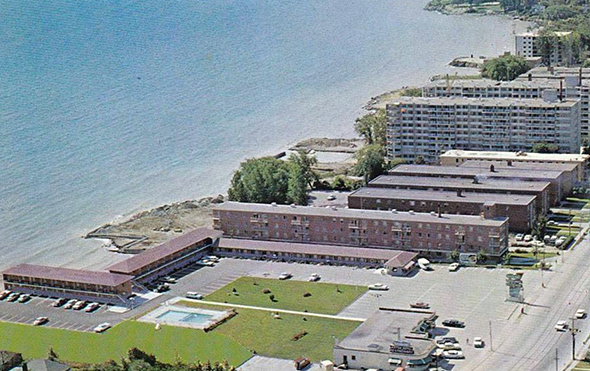
West Point Motel in Mimico ca. 1965.
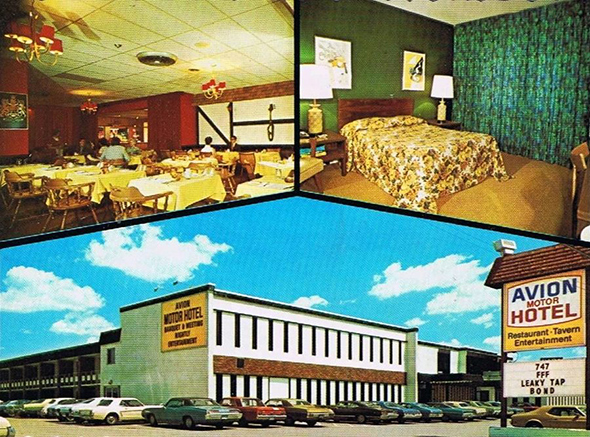
Avion Motel on Airport Rd.
One of the best records of Toronto's lost motel culture is an extensive series of photographs of the Lakeshore strip taken by Roger D. Moore in 1989. The images and accompanying website document these places after their heyday but before they were under threat of demolition.

The towering lures of the Lakeshore motel strip. Photo by Roger D. Moore.
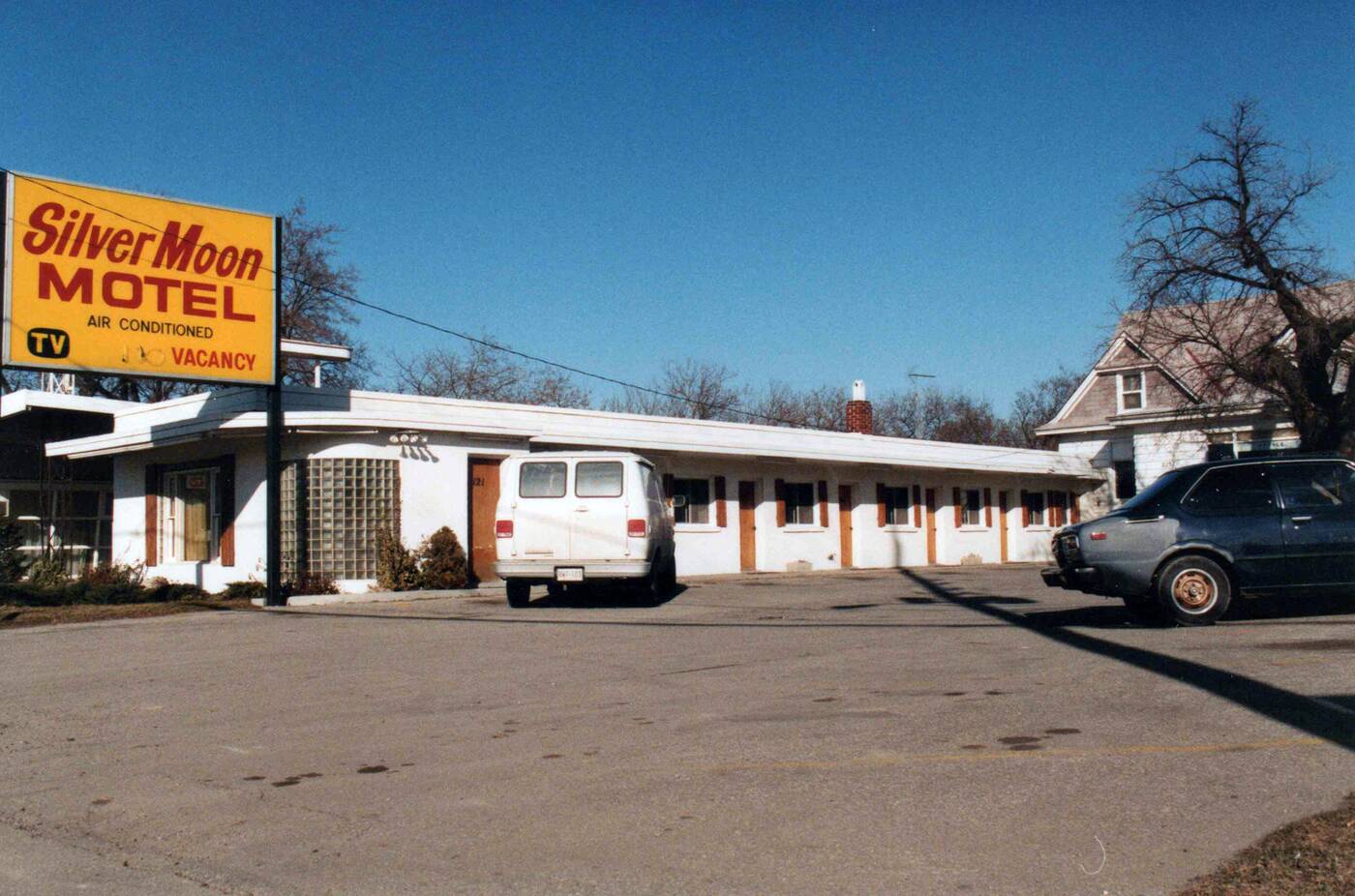
Silver Moon Motel in 1989. Photo by Roger D. Moore.
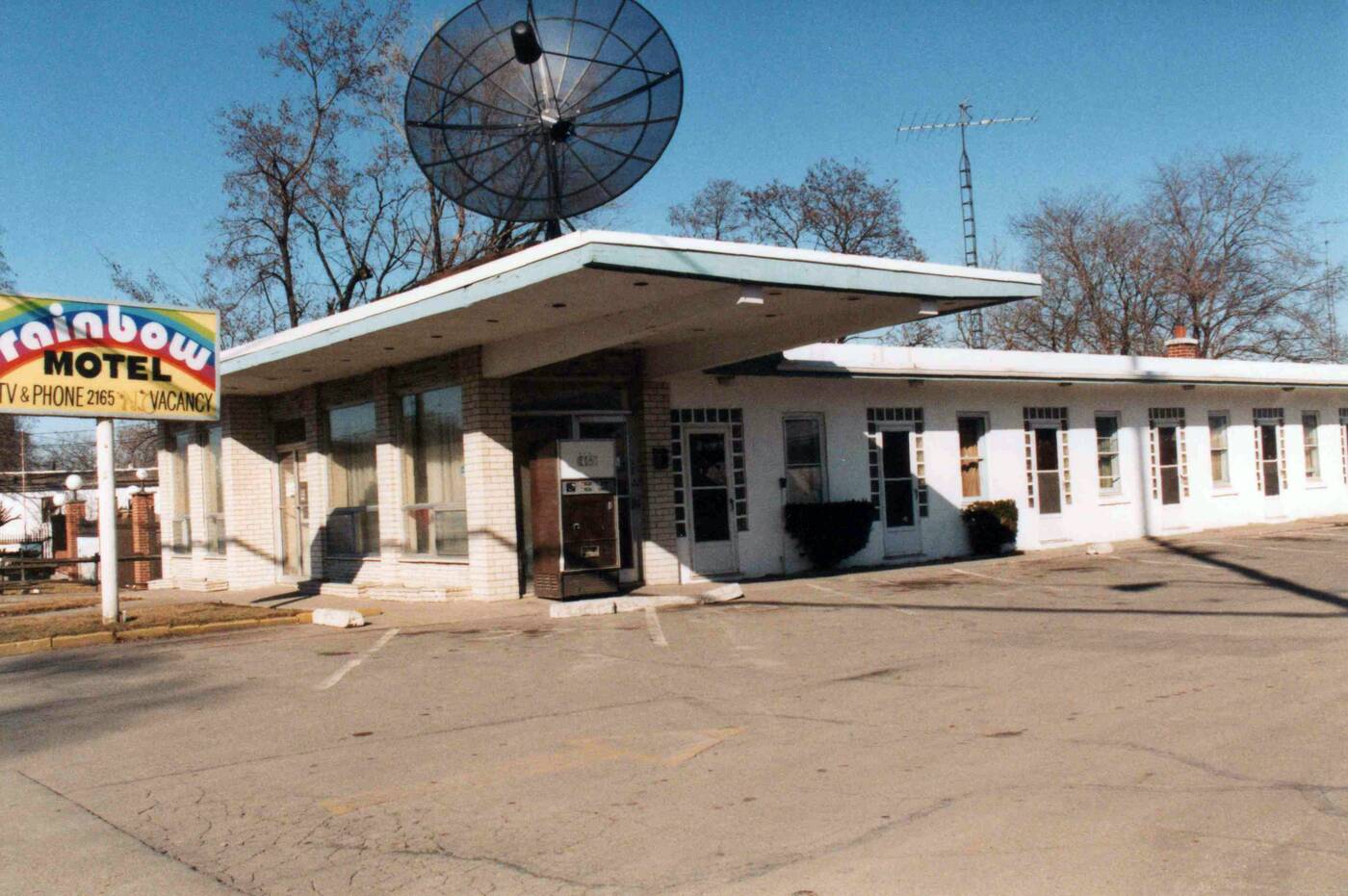
Satellite TV at the Rainbow Motel. Photo by Roger D. Moore.
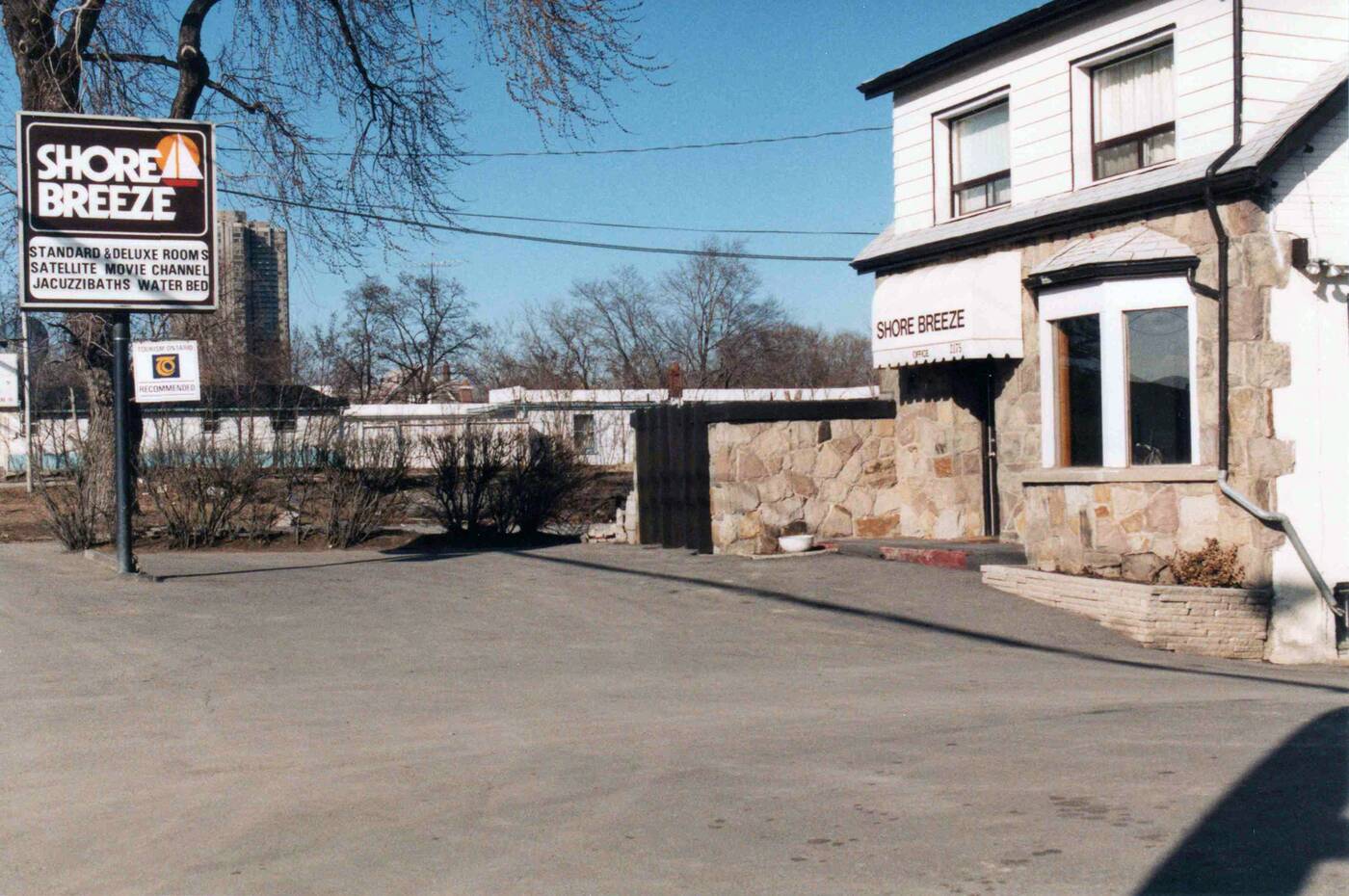
The Shore Breeze was the last standing Lakeshore motel, demolished in 2012. Photo by Roger D. Moore.
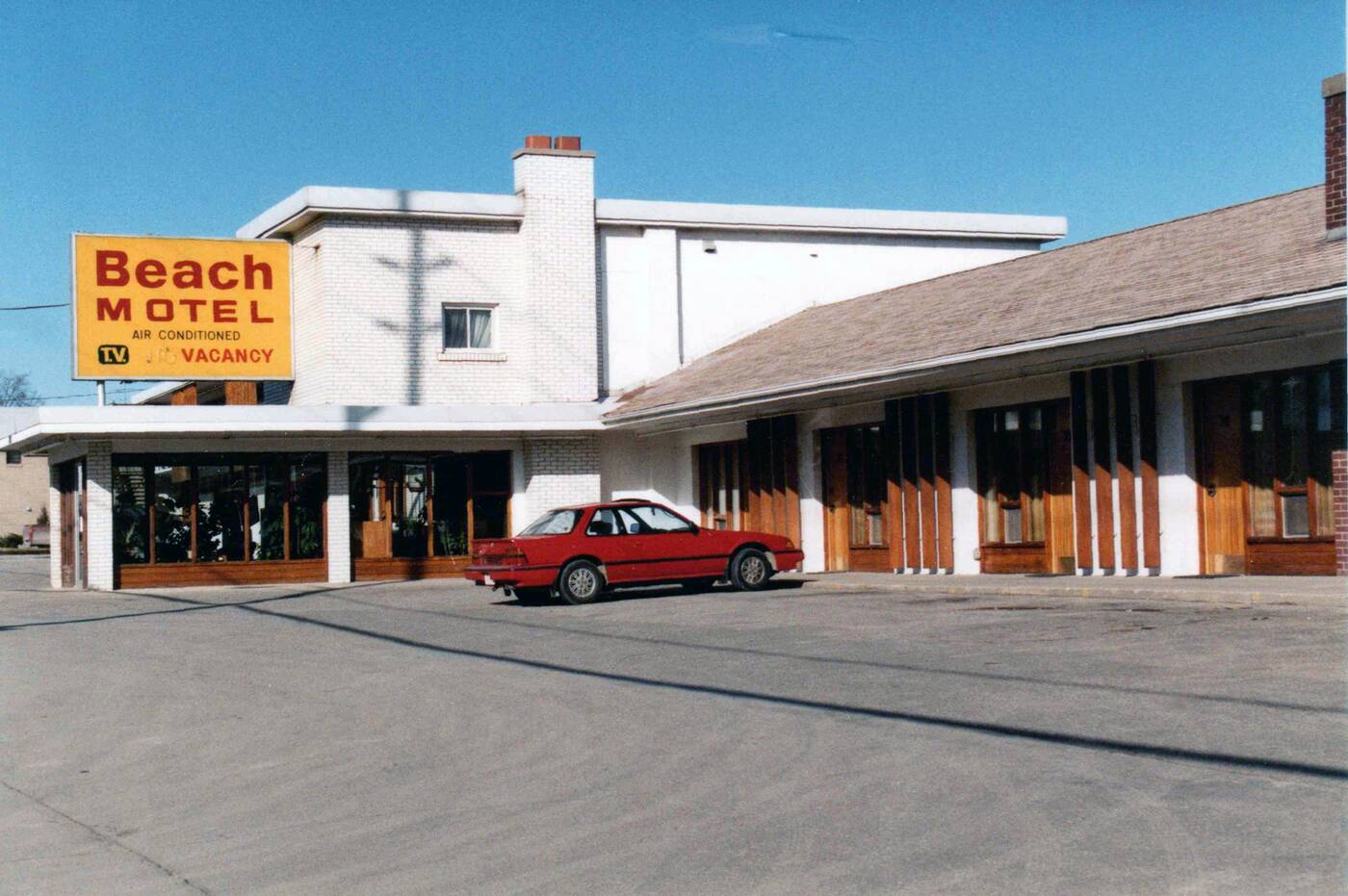
Daytime view of the Beach Motel, arguably the nicest on the strip architecturally. Photo by Roger D. Moore.

The Concler Motel was one of the seediest thanks in part to its on-site restaurant/tavern. Photo by Roger D. Moore.

The sloping Hillcrest Motel, which led right down to Humber Bay. Photo by Roger D. Moore.

The North American Motel was another that led right down to the Bay. Photo by Roger D. Moore.
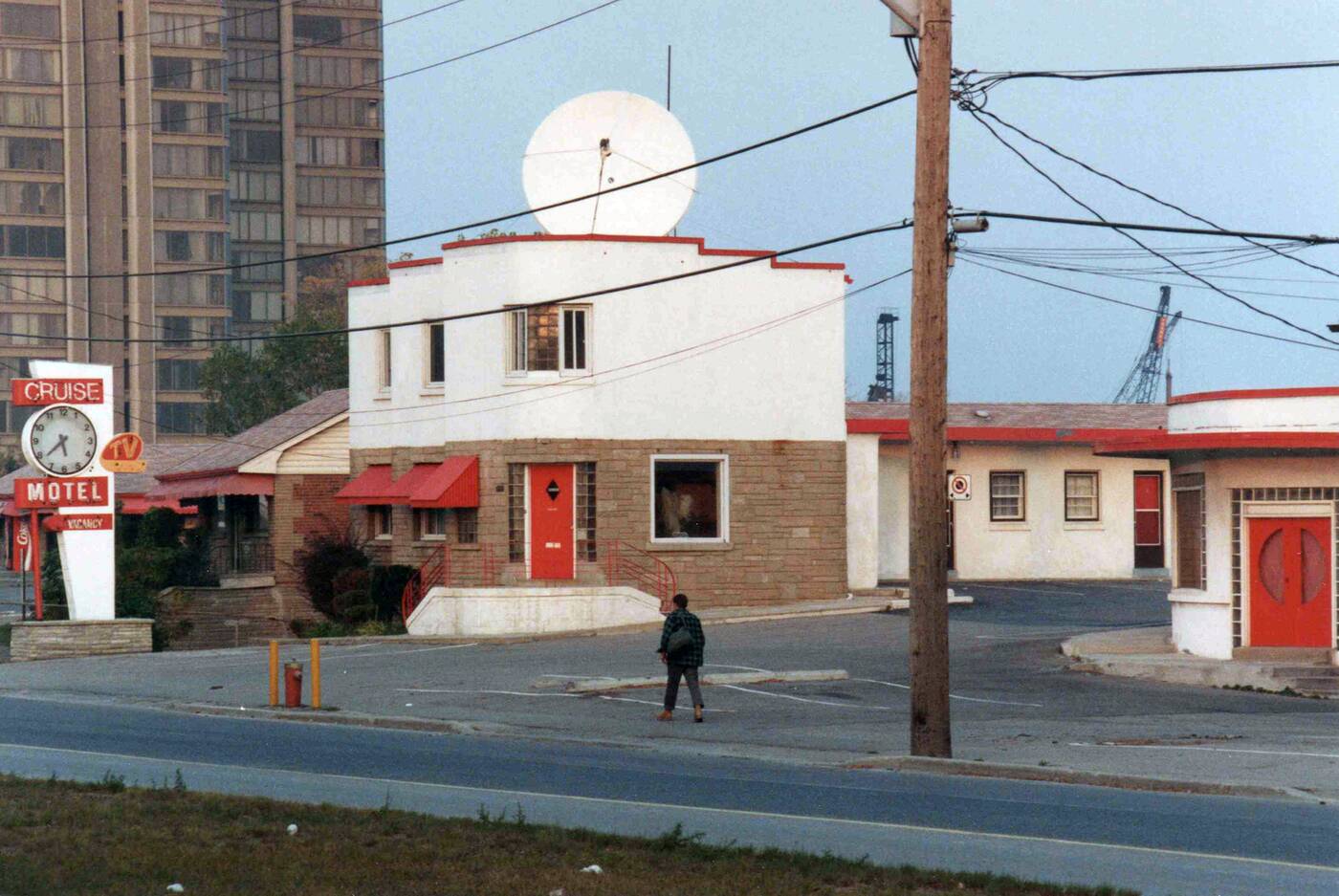
The Cruise Motel and its clock-themed sign. Photo by Roger D. Moore.
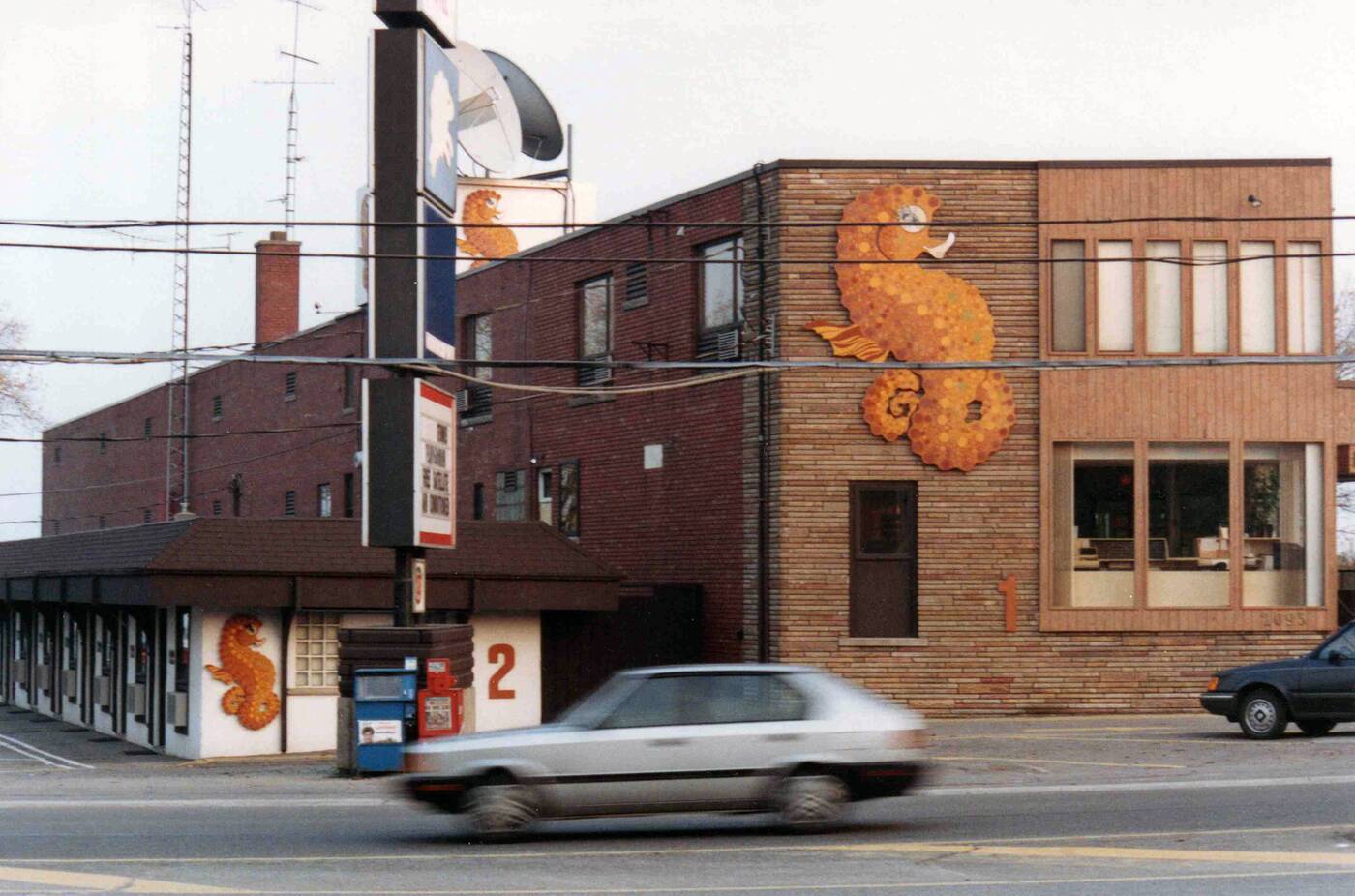
The Seahorse Motel in some of its remaining glory. Photo by Roger D. Moore.
For more motel nostalgia from Toronto and beyond, check out Motel Register on Instagram.
by Derek Flack via blogTO

No comments:
Post a Comment